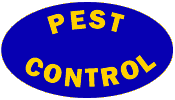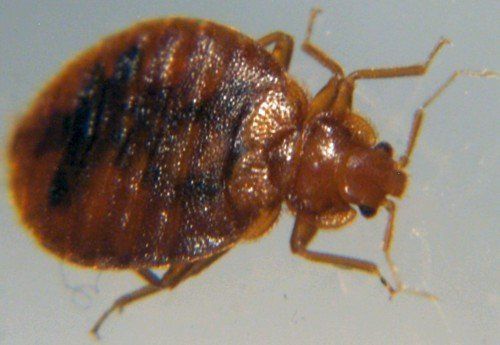OUR BED BUG SERVICE:
BED BUGS ARE BACK
Bed Bugs in the United States have made a strong comeback since nearly being eradicated decades ago. Changes in our pesticide legislation, a lack of public awareness, in addition to an increase in international travel, have given this blood sucking pest the opportunity to flourish again in this country. Bed Bugs are a hitchhiking pest, latching themselves onto luggage, bags and clothing. They can be found in homes, apartments, hotels, dormitories, schools, hospitals, movie theaters and virtually any public space where people gather. A common misconception about what causes Bed Bug infestations in the first place is a lack of cleanliness. Although lack of cleanliness and clutter are not the cause of an infestation, they can make a successful Bed Bug treatment
a challenge. The more clutter, the more places for them to hide and breed. Their flattened bodies allow them to virtually hide and travel undetected within any cracks or crevices such as behind electrical wall plates, behind baseboards, behind picture frames, inside mattresses and box springs, and behind bed headboards. Their cryptic and nocturnal behaviors can make them very difficult to detect as they usually feed at night on their warm-blooded human hosts and while remaining hidden during the day.
WHAT ARE THE SIGNS?
Bed Bugs are nocturnal feeders that usually need to feed every few days. Dark environments in addition to the carbon dioxide emissions from their hosts act as triggers, alerting Bed Bugs that a blood meal is nearby. A single Bed Bug feeds for about 10 minutes until it engorges itself with a full blood meal. The most common sign of a Bed Bug infestation are the telltale feces stains or spots, left behind on mattresses and other infested items, which appear reddish-brown in color from the digested blood they have excreted.
OUR BED BUG INSPECTION AND TREATMENT
Proper identification, thorough inspections, multiple follow-up visits and customer cooperation are essential to any successful bed bug treatment.
The Inspection
The process begins with one of our inspectors contacting you directly to schedule an appointment for an inspection of your location. During that inspection, all reported affected areas, including all accessible adjacent rooms and any other accessible suspect areas of the premises, will be thoroughly inspected for evidence of bed bugs.
Based upon the inspector’s findings, an appropriate treatment plan will then be recommended to ensure the most effective results. Areas or items requiring special attention will be documented by the inspector and presented to you to be completed prior to your treatment date.
The Treatment
On the day of your treatment, our bed bug specialists will arrive ready to tackle the bed bugs head on. Utilizing high-powered targeted vacuuming, our bed bug specialists will reduce any large clumps of bed bugs, their shed skins, or other related evidence by physically removing them. Targeted vacuuming helps to improve the efficacy of our treatments while also giving us a “clean slate” for required follow up inspections.
Your bed bug specialists will also be installing protective bed bug encasements on any mattresses and/or box springs in the treatment area that were present, or otherwise included, at the time of original inspection and estimate. These encasements act as a physical barrier against invading bed bugs by isolating and starving out any bed bugs that may be trapped in the mattress or box spring, while also preventing any outside populations of bed bugs from gaining entry.
In addition to installing protective mattress and box spring encasements, bed bug monitoring devices will also be installed, under each leg of any furniture where people sleep or rest (beds, sofas, or armchairs). These interceptor traps will capture any bed bugs attempting to climb up or down the legs of such furniture in search of a blood meal.
Finally, a combination of insecticidal liquid and dust applications are then carefully and strategically applied to those areas where bed bugs love to hide out, lay their eggs, and wait for their next blood meal.
Upon completion of your treatment, at least two follow-up visits are required, at approximately ten day intervals, to ensure all bed bugs have been eradicated. If at any time during your guarantee period, live bed bugs are found as a result of any of the follow-up inspections, we will retreat free of charge, as deemed necessary, until the bed bugs have been eliminated.









